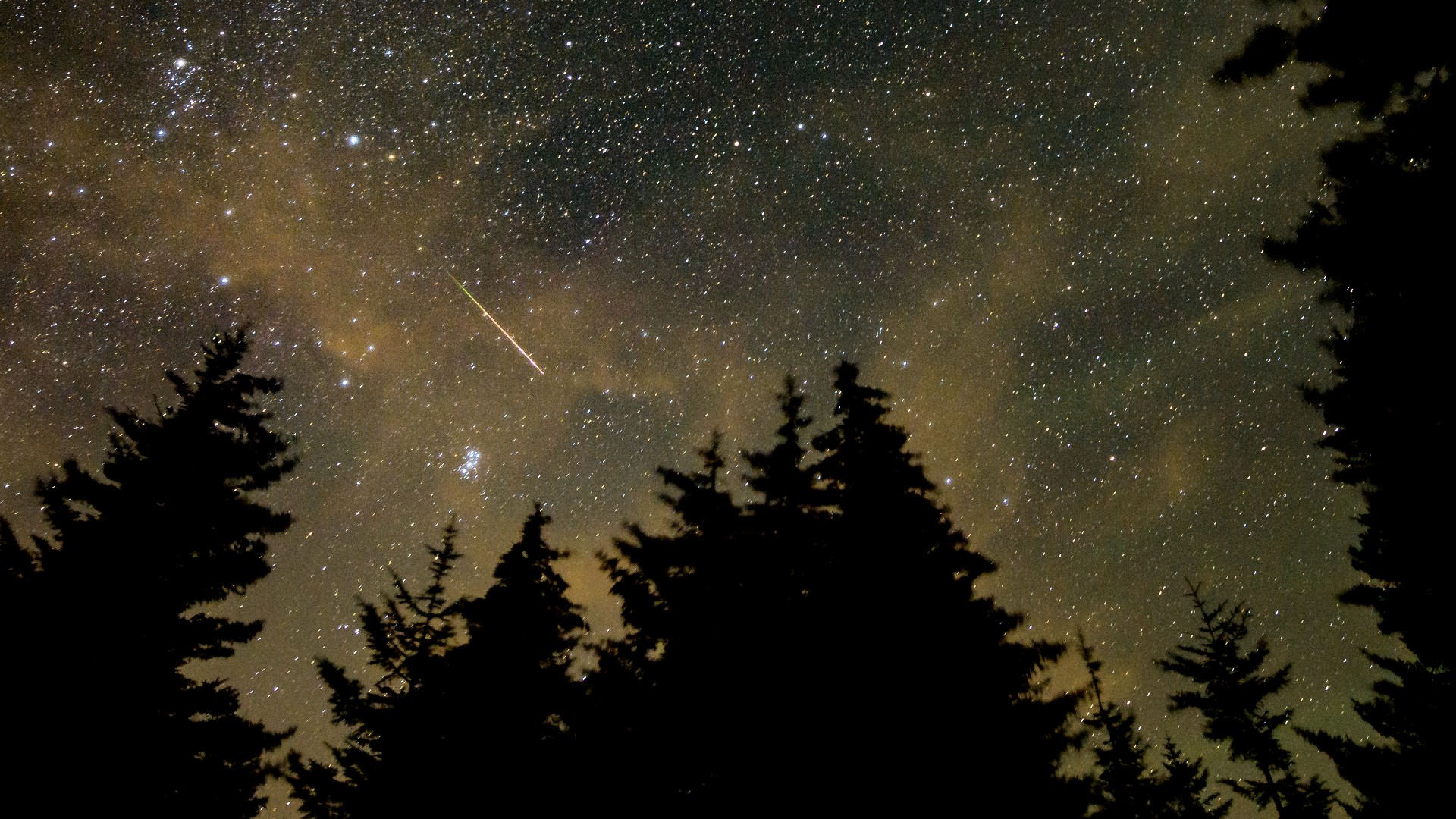Watch the Draconid meteor shower rain fire over Earth on Oct. 8 and 9
Who will win the cosmic clash of hunter (moon) vs. dragon (meteor)?

On Saturday and Sunday, Oct. 8 and 9, the skies over Earth will glimmer with flaming space rocks and dust during the annual Draconid meteor shower. Unfortunately, the full Hunter's Moon, which peaks on the same nights, will largely outshine this year's shooting star spectacle.
Meteor showers occur when Earth passes through the clouds of rocky debris left behind by comets. During the Draconids, our planet collides with millions of small, icy rocks left by the comet 21P/Giacobini-Zinner, which passes through our solar system and crosses Earth's orbit once every 6.5 years, according to NASA. (The comet made its last close approach to Earth in September 2018.)
As those little "comet crumbs" tumble through Earth's atmosphere by the thousands, some visibly catch fire and streak through the sky, officially becoming meteors. Most of these space rocks burn up long before reaching the planet's surface, though a select few may be large enough to survive the descent and hit the ground as meteorites.
Related: How many meteorites hit Earth every year?
While the meteors we see during showers are actually right above us in the atmosphere, they appear to be coming from distant constellations. As such, each shower is named for the constellation that its meteors seem to originate from. In this case, that's the constellation Draco, the dragon — a northern sky constellation whose serpentine tail swoops between the Big and Little Dippers.
In a typical year, skywatchers can expect to see 10 to 20 meteors per hour during the Draconids, according to NASA. However, this month's full moon will likely outshine most of them. For the best chance at catching some meteors, head to the darkest place you can find and let your eyes adjust to the darkness there for at least 30 minutes.
No telescope or binoculars are necessary to catch the show in our planet's atmosphere. But if you’re angling to get a closer look at the moon, or to up your stargazing game in general, here are the best telescopes for every skill level.
Sign up for the Live Science daily newsletter now
Get the world’s most fascinating discoveries delivered straight to your inbox.

Brandon is the space/physics editor at Live Science. His writing has appeared in The Washington Post, Reader's Digest, CBS.com, the Richard Dawkins Foundation website and other outlets. He holds a bachelor's degree in creative writing from the University of Arizona, with minors in journalism and media arts. He enjoys writing most about space, geoscience and the mysteries of the universe.









